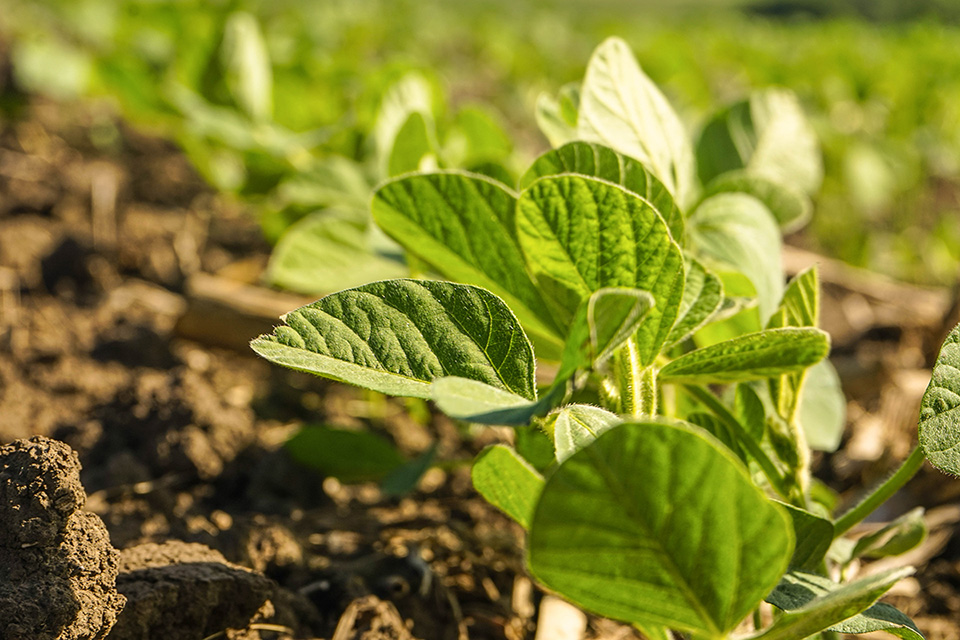
(Photo: Joclyn Bushman/Iowa Soybean Association)
5 Tips to Seed Selection
November 29, 2022 | Kriss Nelson
The seed business is ever-changing. Seed trends, traits and how pests react to those traits change every year.
The most important management practice for highly profitable soybeans is variety selection. Before making seed selection decisions, consider these tips.
1. Carefully consider soybean maturity groups
Mid- and late-season weather and harvest are all factors to consider when choosing the right maturity group.
“First, understand what maturities fit your region for maximum yield frame,” says Joel Thomas, Iowa Soybean Association (ISA) farmer-member and Pioneer seed salesman from Dallas Center.
Once regional maturity groups are identified, choose wisely so your soybeans do not mature simultaneously.
“Harvesting soybeans when they are too dry can make an otherwise good soybean variety look average due to harvest loss at the header,” says Scott Nelson, ISA senior field services program manager. “To prevent lost bushels, spend time fine-tuning your soybean variety maturities so you will have time to harvest when soybeans are at optimum moisture.”
Having some diversity in maturities has another advantage when it comes to weather. Early-, mid- and late-season maturity soybeans will have different responses to weather throughout the season.
2. Be selective when adopting new herbicide traits
The seed industry is rapidly releasing soybean varieties with new forms of herbicide resistance.
“In some cases, the soybean varieties containing these traits are very offensive without much stress resistance bred into them,” says Nelson. “Understand these new varieties, and place them in the proper environments for increased profitability.”
Know what species of weeds you are trying to control and who will be applying the herbicide, Thomas says. Also be aware of sensitive crops in neighboring fields.
3. Don’t select varieties on yield alone
A soybean variety that is high performing in a test plot or your neighbors’ fields may not be the best option for you.
“Consider that some of the performance comparisons on soybean varieties are from highly fertile, level soil with optimum drainage,” says Nelson. “Soybean varieties that do well under these conditions may not have the stress tolerance to yield optimally on less productive, poorly drained or droughty soils.”
Thomas says every soybean variety has yield potential. Look for the one that best matches your field.
“It’s a matter of finding the right fit for your farming style,” he says. “For example, if you are no-till, you might have cooler or wetter soils. Is the fertility high, or is it management level? Are you using a fungicide, insecticide or seed treatment?”
4. Know your fields
Review notes from the past year and consider an agronomist’s advice on the primary stresses of soybeans in your fields. Stresses include fertility levels, other soil conditions, soybean cyst nematode (SCN), sudden death syndrome (SDS), brown stem rot, foliar diseases and physiological diseases, such as iron deficiency chlorosis and drought tolerance.
“Do you know if there is cyst pressure? Is there high pH in the soil? Is the fertility level high, medium or low? What diseases have there been in the past? Is SDS a concern?” says Thomas.
Fall sampling for SCN will help you understand what measures are needed to combat one of Iowa’s most devastating pests to soybeans.
“Some companies are releasing genetics that contain Peking-type SCN resistance,” says Nelson.
“Favor selection of these varieties as SCN is adapting to older resistance, such as PI 8878. Anything you can do to use varieties with new resistance will improve the resiliency of your soybeans, especially in stressful summers.”
5. Select multiple varieties
Try choosing three to four seed varieties for your farm.
“Many farmers complain their soybean yield levels have stagnated,” Thomas says. “Part of this stagnation is they are using too few varieties on their farm. Pick a package of offensive and defensive traits.”
The process of choosing, growing and harvesting different soybean varieties should not be taken lightly, Thomas says.
“Farmers should spend the same time and energy raising soybeans as they do corn,” he adds.
Back